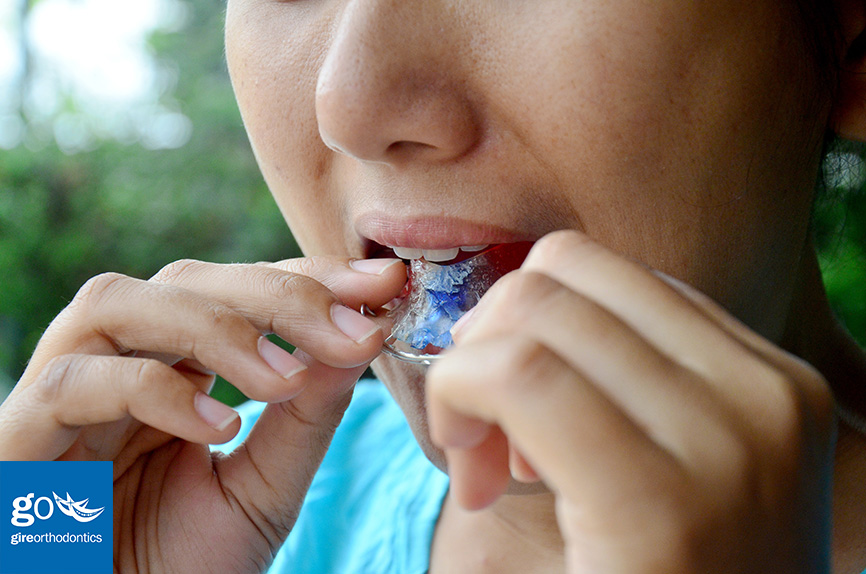 La Habra/Chino Hills, CA – Wearing a retainer after braces are removed or when aligner treatment has been completed, is actually one of the most important components of your overall orthodontic treatment. Your teeth may not be fully stable immediately after treatment is completed and retainers will assist in holding the teeth in their new positions while the bone and jaws stabilize. A retainer does exactly what the name implies – retains the new location of the teeth that was achieved during your months in braces or aligners.
La Habra/Chino Hills, CA – Wearing a retainer after braces are removed or when aligner treatment has been completed, is actually one of the most important components of your overall orthodontic treatment. Your teeth may not be fully stable immediately after treatment is completed and retainers will assist in holding the teeth in their new positions while the bone and jaws stabilize. A retainer does exactly what the name implies – retains the new location of the teeth that was achieved during your months in braces or aligners.
But, just like with braces, there are many different types of retainers you could wear once your braces are removed. Dr. Robert Gire of Gire Orthodontics explains some of the options.
Hawley retainers are probably what most people think of when it comes to retention. They are made of acrylic and a metal wire. The wire will go across the front of the teeth, and the acrylic portion of the retainer is molded to fit along the palate of the mouth. Hawley retainers can be personalized with numerous colors and can even have symbols or sparkles in them.
Hawley retainers can be adjusted by your orthodontist to ensure a proper fit for as long as you wear it. These types of retainers can be long lasting if they are properly cared for. However, the metal wire makes them more noticeable and it can take a few days to get used to talking with it in since there is acrylic covering the palate. This type of retainer tends to provoke the gag response more than the other types of retainers due to the acrylic on the inside. Hawley retainers tend to be less hygienic and can be more difficult to clean long term as well since there are a lot of nooks and crannies where plaque and bacteria can hide and fester.
A vacuum formed retainer (VFR) is very similar to clear aligners. You may hear of name brands such as Essix, Zendura, or Biocryl as these tend to be the most popular. It’s made of clear plastic that fits completely over the teeth. It will be less noticeable than a Hawley retainer and they tend to be more comfortable. Adjustments to the high quality plastic can be made to move the teeth slightly as well as to make them more retentive. Vacuum formed retainers can last just as long or longer than Hawley retainers. They are much easier to clean than Hawley retainers and they are certainly more acceptable in our Snapchat and Instagram society since they are virtually invisible.
Just as with clear aligners, Hawley retainers and VFRs will need to be removed when eating or drinking anything other than water. Dark liquids can stain the plastic material of the retainer, and eating with it can damage it.
If your orthodontist is worried about relapse, he or she may recommend a bonded or fixed retainer. This type of retainer is semi-permanent, meaning it will be placed by the orthodontist and removed by the orthodontist once your teeth are stable enough. Bonded retainers are usually used on the lower front teeth, and are worn until the teeth and ligaments that hold them in place stabilize. It’s very common for these retainers to last for many, many years.
A bonded or fixed retainer can be hard to keep clean, so it is important to take your time when brushing and flossing. You also have to be careful while eating to avoid damage.
“The day your braces come off is an exciting one, but it isn’t the end of your treatment,” says Dr. Gire. “To ensure that smile stays as beautiful as the day your braces are removed, it’s important to choose the right type of retainer and wear the retainer exactly as your orthodontist prescribes.”
Your orthodontist wants to ensure your smile stays beautiful forever. He or she will discuss with you the types of retainers available, as well as the pros and cons of each to help you make an educated decision about which will fit best for your lifestyle.

